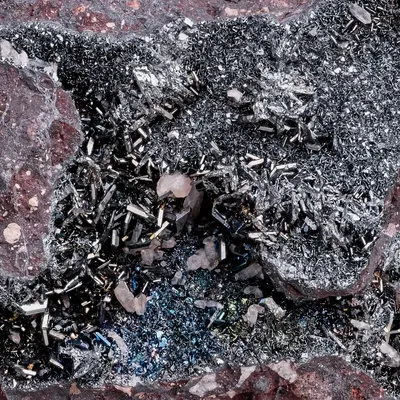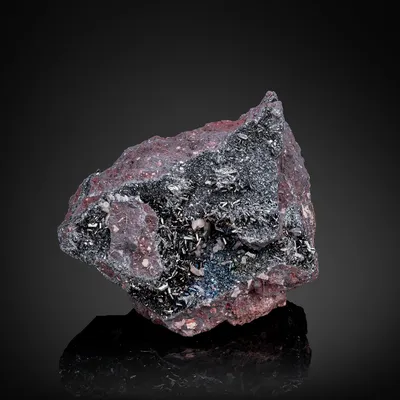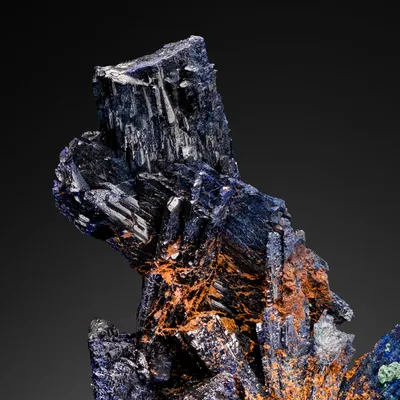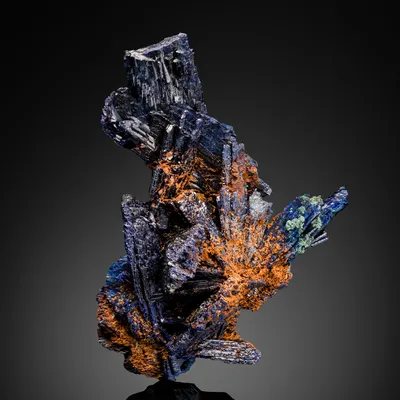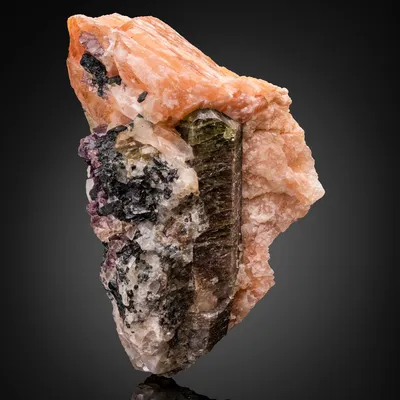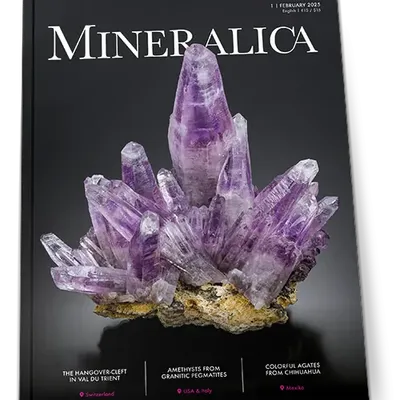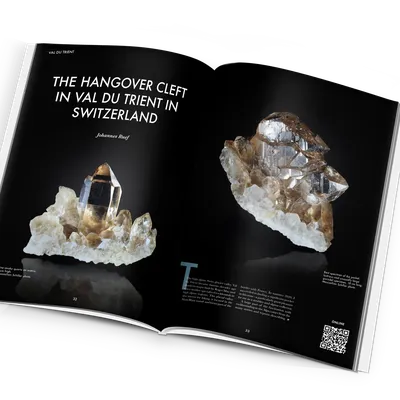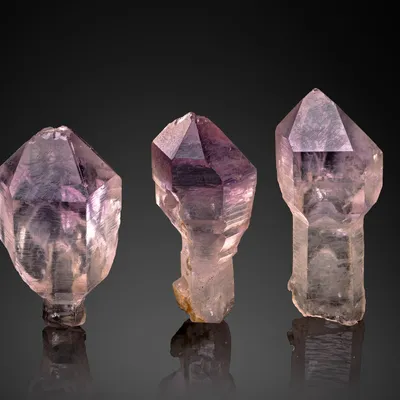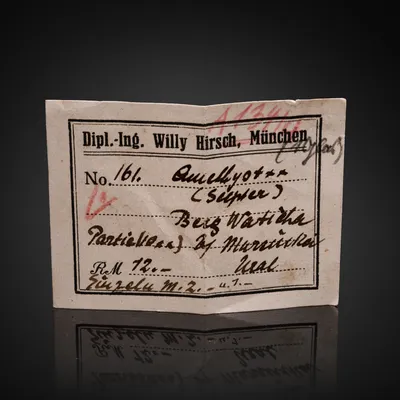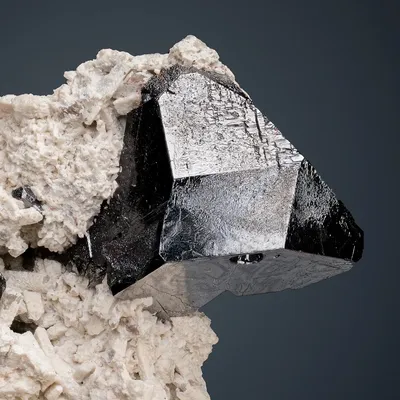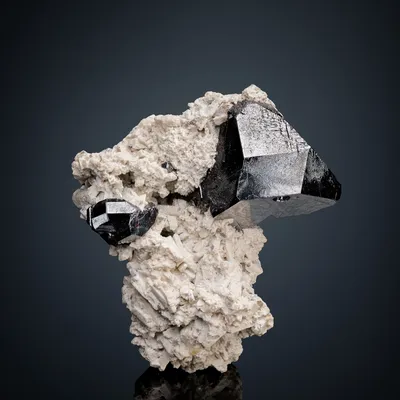Tatiana Falkova - Capturing the Beauty of Minerals in Watercolor
An exclusive interview with Tatiana Falkova at the Munich Show 2024.

Mineralica: Tatiana, could you tell us about your background and how you became an artist?
Tatiana Falkova: I was born in Moscow, Russia, in 1971. My initial career path was far from the art world: I graduated as an engineer specializing in the automation of production systems. After university, I worked in my field for some time. However, when I had my child, I began exploring my creative side, which had always been present in my life in one way or another.
One of my early creative pursuits was mastering the mosaic technique, and I even worked professionally on creating mosaic artworks and wall panels. Then, in 2017, I fulfilled a long-time dream of mine: I started painting with watercolor. I taught myself through online lessons, live workshops, and a lot of practice. My early attempts were simple exercises – learning to create smooth transitions and color fills – but gradually, I refined my technique and developed a deeper understanding of color.
What drew you to watercolor as your primary medium?
Watercolor has a unique magic. Its challenge lies in preserving the light because the process works from light to dark, unlike oil or acrylic painting. If you over-darken an area and lose the light, you can’t recover it. This complexity, combined with its potential for beauty, captivated me.
How did you transition from general watercolor painting to hyper-realism?
At the beginning of my journey, I worked on illustrations for photostocks, private orders, and even illustrated a children’s book. Over time, I realized that I was particularly drawn to hyper-realistic art. I loved capturing complex textures like wood, stone, and fur with precise detail. This meticulous approach eventually led me to botanical painting, where I could depict the intricate details of plants and flowers. I even became a member of the Society of Artists of Botanical Art in Russia.
What inspired you to start painting minerals?
About a year and a half ago, in 2023, my mosaic teacher, Dmitry Romanov, who is an expert in minerals and geology, introduced me to the world of minerals. I was instantly captivated by their beauty and diversity. Each specimen felt like a piece of natural art. I decided to start painting them and was fortunate to connect with enthusiastic collectors and connoisseurs who generously shared their collections with me. This access to incredible specimens has been a privilege, and I’m thrilled to share their beauty through my art.
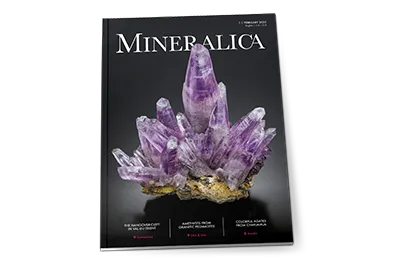
The new premium magazine for mineral collectors
4 issues per year – packed with fascinating finds, expert knowledge, and collector passion. The first bilingual magazine (German/English), including full online access.
Explore subscriptionHow do you approach creating a "mineral portrait"?
Each mineral is a unique "hero" of its portrait. I am fascinated by their textures – the cracks, sheen, cavities, and colorful shimmers. Recreating these details is an inspiring process for me. On average, it takes 3-4 weeks, sometimes a month, to complete a single piece. I like to think of it as creating the mineral anew, millimeter by millimeter.
Choosing which mineral to paint is often the hardest part. There are so many stunning specimens that it’s challenging to decide. Commissions make the process easier since the customer provides the mineral or its photograph. I work primarily from high-quality photos because watercolor requires consistent light, and natural specimens change under varying conditions of daylight.
What techniques do you use to capture the unique characteristics of minerals?
The first step is transferring the drawing to watercolor paper and selecting the color scheme. This is crucial for capturing the mineral’s precise hues. Sometimes, I use warm illumination to emphasize the mineral’s aura and beauty – as I did with a sphalerite painting in 2023. At other times, I aim for a more accurate depiction using white daylight.
Painting minerals often requires inventing new techniques to represent effects like shine, sparkle, veins, dust, transparency, or mattness. It’s an exciting challenge every time. The endless variety of minerals ensures that my work never becomes monotonous.
What was your experience like at the Munich Show in 2024?
Attending the Munich Show in October 2024 was incredible. I was invited by the organizers and had the opportunity to meet amazing people – mineral artists, collectors, photographers, and publishers. Their passion for minerals was infectious, and I received so much positive feedback about my work. For any artist, such recognition is deeply inspiring and motivates you to create even more.
The specimens on display were breathtaking. Every time I turned a corner, I thought, “I wish I could paint this one… and that one… and that one!” The diversity of minerals is astonishing, and I’m grateful to capture even a fraction of it in my watercolor paintings.
What do you hope to achieve with your art?
My goal is to share the uniqueness of minerals with the world. Each painting is a way to celebrate and preserve the natural artistry of these specimens. I hope my work inspires others to appreciate the astonishing diversity of the mineral kingdom and perhaps see these natural treasures in a new light.








